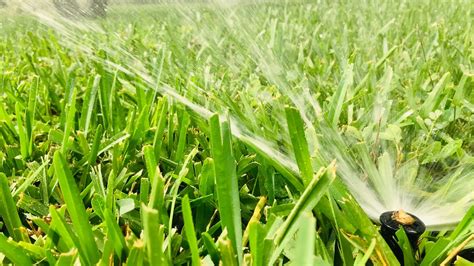The Secret to a Perfect Overseeded Lawn: Watering
Overseeding your lawn is a fantastic way to thicken it up, improve its color, and increase its resilience against weeds and pests. But the success of your overseeding efforts hinges heavily on one crucial element: proper watering. Getting the watering right is the secret to a lush, healthy lawn that thrives after overseeding. This guide will delve into the nuances of watering your overseeded lawn, ensuring you achieve the perfect results.
Why is Proper Watering So Crucial After Overseeding?
The tiny seeds you've just sown are incredibly vulnerable. They need consistent moisture to germinate and establish a strong root system. Insufficient watering leads to poor germination rates, weak seedlings, and a patchy, uneven lawn. Conversely, overwatering can drown the seeds, preventing germination and potentially leading to fungal diseases. Finding the sweet spot is key.
How Often Should I Water My Overseeded Lawn?
This depends on several factors including your climate, soil type, and the time of year. However, a good general rule is to keep the soil consistently moist, but not soggy, in the top inch or two.
-
Immediately After Overseeding: Water gently immediately after seeding to settle the seeds into the soil and provide initial hydration. Avoid using a forceful spray that can dislodge the seeds. A gentle shower or a low-setting sprinkler is ideal.
-
During Germination (7-14 days): Water frequently enough to keep the soil moist. This might mean watering several times a day, especially in hot, dry conditions. Check the soil moisture regularly by sticking your finger an inch or two into the ground. If it feels dry, it's time to water.
-
After Germination (2-3 weeks): As the seedlings establish themselves, you can gradually reduce watering frequency. Aim for deep, infrequent watering to encourage strong root growth. This promotes drought tolerance in the long run.
-
Established Lawn: Once the seedlings are well-established (usually 4-6 weeks), you can water according to your typical lawn care routine, adjusting for weather conditions.
What is the Best Time of Day to Water?
The best time to water is early in the morning, before the sun gets too intense. This allows the water to soak into the soil and minimizes evaporation. Watering in the evening can leave the grass wet overnight, increasing the risk of fungal diseases.
How Much Water Should I Use?
Avoid light, frequent watering, as this encourages shallow root growth. Deep, infrequent watering is far more effective in promoting a healthy root system. Aim for about 1 inch of water per week, either through rainfall or supplemental irrigation. You can use a rain gauge to measure the amount of water your sprinkler system delivers.
What Type of Watering System is Best for Overseeding?
While sprinklers are common, a gentle, oscillating sprinkler is generally preferred for overseeding. Avoid using high-pressure sprinklers, as they can wash away the seeds. A soaker hose is another excellent option, as it provides even moisture to the soil without disturbing the seeds.
What if I Overwatered or Underwatered?
Overwatering: If you notice standing water or the soil remains constantly soggy, reduce your watering frequency and duration. Good soil drainage is essential; consider amending heavy clay soil with organic matter to improve drainage.
Underwatering: If the soil is dry and cracked, increase your watering frequency and duration. Deep watering is essential to encourage deep root growth, so adjust your sprinkler system or soaker hose to ensure adequate coverage.
How Do I Know if My Overseeded Lawn is Getting Enough Water?
Regularly check the soil moisture. Stick your finger an inch or two into the ground. If it feels dry, it's time to water. Observe your seedlings; if they look wilted or yellowing, they likely need more water. If they appear dark green and healthy, you're likely on the right track.
By carefully monitoring your watering practices and adjusting them based on your specific conditions, you can ensure your overseeding efforts culminate in a stunningly beautiful and healthy lawn. Remember, patience and consistent observation are key to success!

